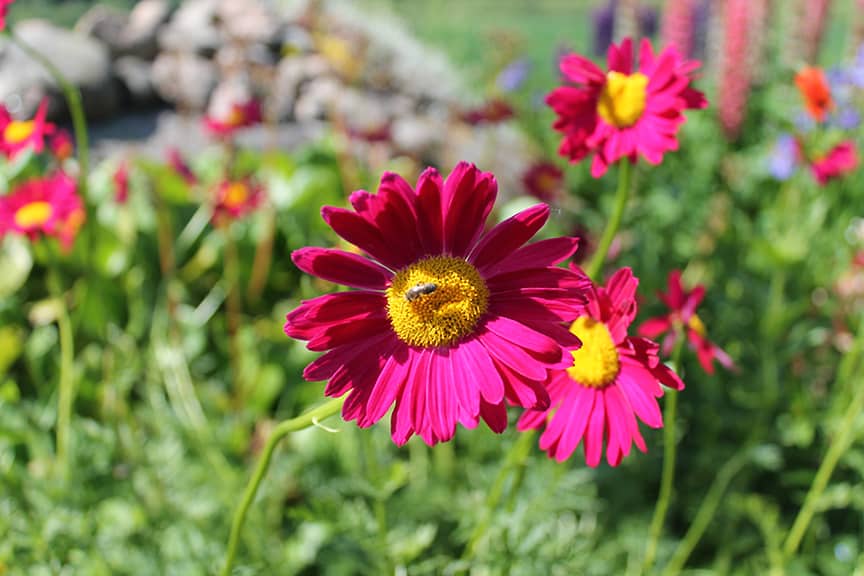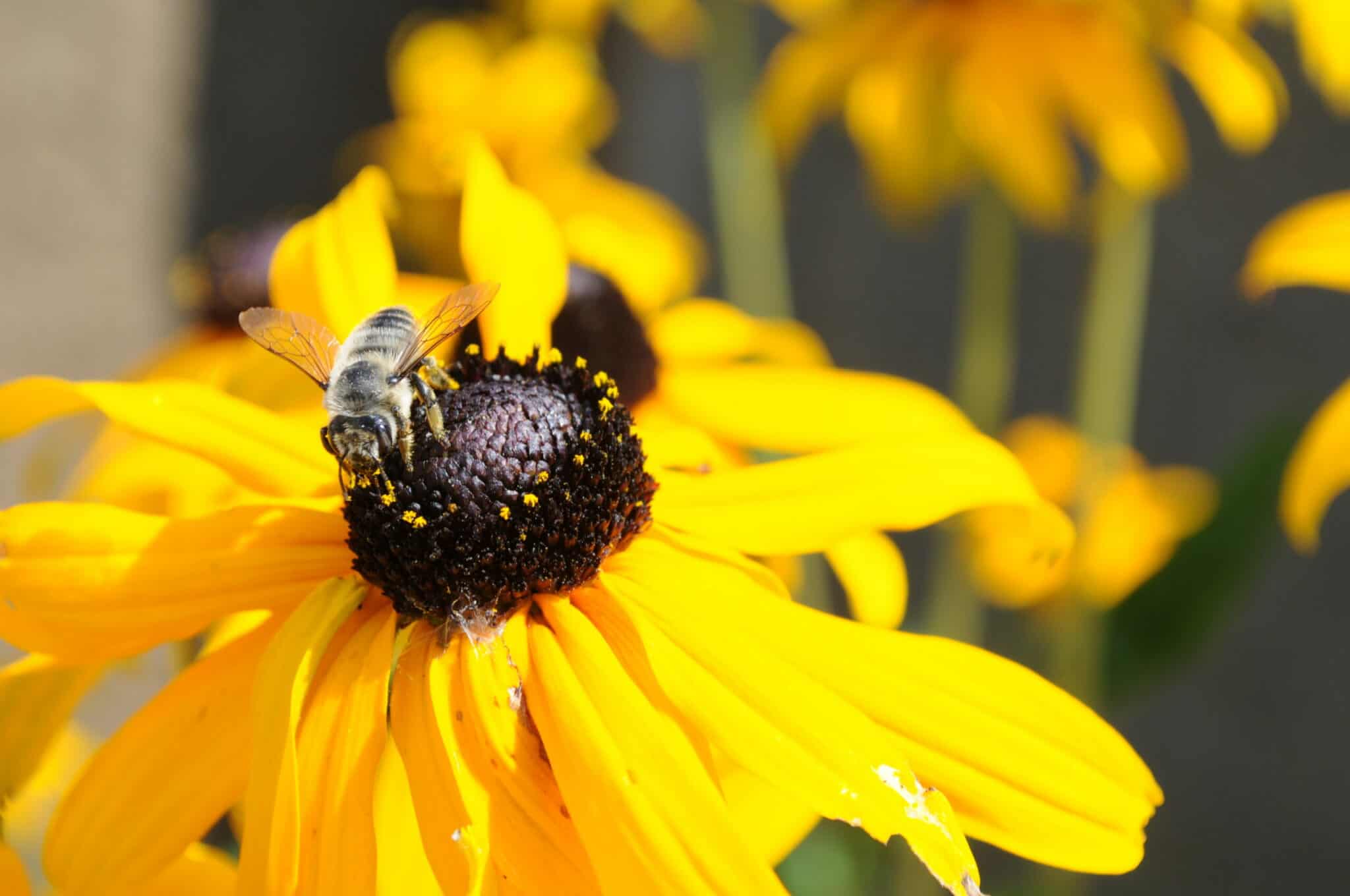Essential to the planet, a loss of habitat has endangered their survival

If you spend any time around flowers in a garden you’ve probably noticed bees and butterflies flitting around them and stopping to sip their nectar. They are also performing an essential service for us – when they visit flowers pollen grains stick to them and get transferred to the next flower they visit – that’s pollination, and it’s essential for many plants to produce the fruits, vegetables and nuts that we eat. According to the Pollinator Partnership (visit their website, www.pollinator.org) bees, butterflies, birds, beetles, bats and some small mammals are responsible for bringing us about one-third of our food. It is estimated that 75% to 95% of all the flowering plants on the planet need help with pollination. Pollinators have become endangered – the biggest threats include loss of habitat as the native plants they depend on are replaced by highways and streets, lawns and plants imported from other parts of the world that aren’t food sources for pollinators here.
The website of the USDA (US Department of Agriculture) recommends some ways to support the pollinators that are essential to our food supply:
Add some plants to your landscape that support pollinators by producing pollen and/or nectar. Trees and shrubs such as blueberry, cherry, plum, dogwood, willow are some examples. Try to include them in your landscape, and grow some of the plants described below in your garden.
Include a variety of plants in your landscape – flowers in different colors that bloom at different times in spring, summer and fall. Red flowers are attractive to hummingbirds – which not only help to pollinate them but are also delightful to watch. Even if your garden is in pots, tubs or window boxes on your deck or patio, it can still attract pollinators. Plant the flowers in clumps, not just one or two, and include a variety of flower colors and shapes.
Try not to use pesticides on your property, or at least keep their use to a minimum and always follow the package directions.
Provide a source of clean water for pollinators – a bird bath is great, and adding a few stones that extend above the surface will attract insect pollinators as well as birds.
Did you know there is a Pollinator Week every year in June? This year it is June 21-27. You can be part of it! Visit www.pollinator.org/pollinatorweek for information and fun projects for kids.
Here are some plants to grow in your garden to help pollinators:
Beebalm produces summer flowers with bracts in shades of red, pink, purple and white atop tall, straight stems lined with pairs of aromatic green leaves. Beebalm works best in moist soil – water in dry weather. The flowers attract bees, and the red-flowered varieties may draw hummingbirds too.
Black-eyed Susan is a summertime classic in East End gardens. The daisy-like flowers can be orangey
gold to a rich golden yellow, depending on the variety, with a prominent round center that is dark brown in most varieties. The plants grow about 2 feet high, are easy to grow and tolerate hot weather.
Dill is a classic in sunny herb gardens – its fine-textured leaves are versatile in the kitchen. Pollinators are drawn to the flat clusters of flowers that appear in summer, and eventually produce the seeds we know in the kitchen as dill seed.
Goldenrod blooms in late summer and fall – you’ve probably seen it growing wild along the roadside. Varieties suited to flower gardens are pretty companions for asters and chrysanthemums. In the garden give goldenrod a sunny spot.
Lavender is loved for its fresh fragrance. It grows 1 to 3 feet tall and produces wands of tiny purple blossoms in midsummer – heavenly planted in masses alongside a path.
Purple coneflower, or echinacea, bears daisylike purple-pink flowers with bronzy brown centers that slowly elongate and look like pincushions. In a sunny well-drained spot it blooms through much of the summer.
Sweet alyssum is a popular edging for flower beds, pots and windowboxes, where its clusters of tiny white flowers tumble over the edges. Plants bloom from spring to fall, attracting pollinators and beneficial wasps that prey on aphids and other pests.
Thyme, a favorite in herb gardens and kitchens, grows about 6 to 12 inches high, and creeping thyme can go between paving stones in a sunny path. Plant thyme in sunny, well-drained soil.
Yarrow’s flat-topped clusters of tiny flowers bloom atop tall stems in summer, in bright gold, soft yellow, pink, white, red and burnt orange. These sun lovers can tolerate hot, dry conditions in average soil.








